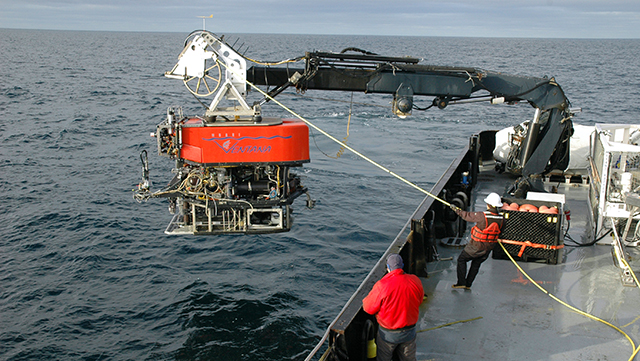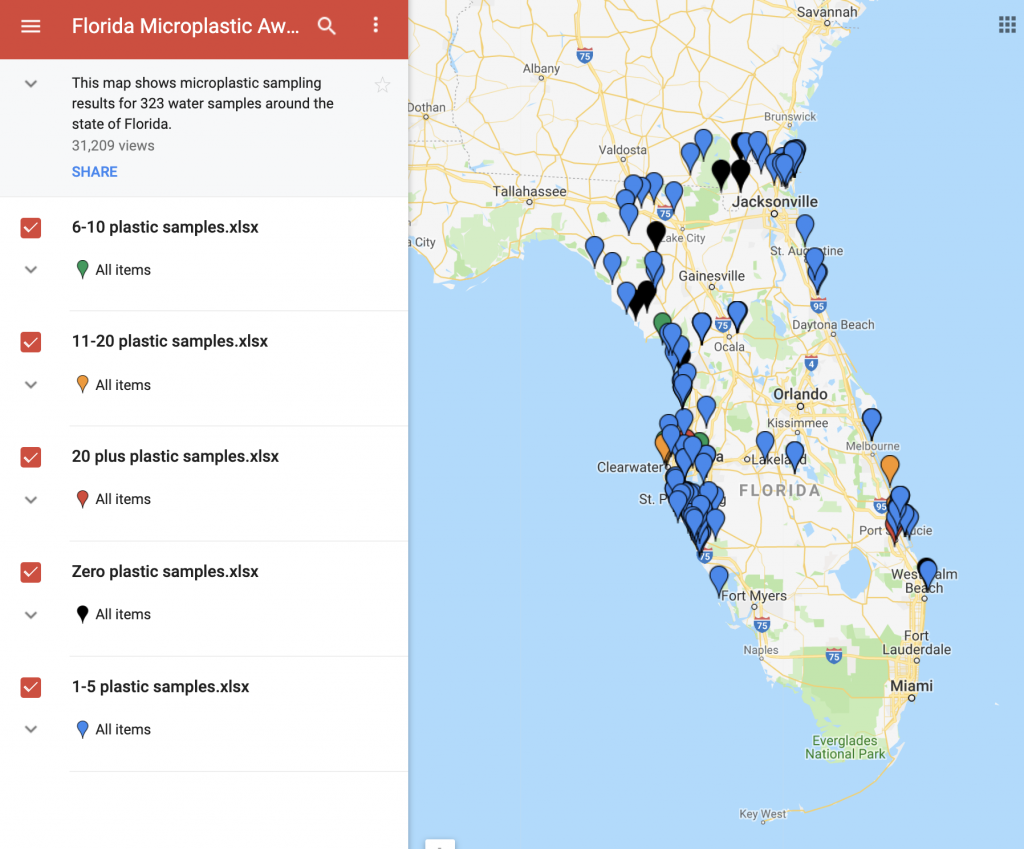Plastic is the most common form of debris found in the oceans, and is typically portrayed as large garbage patches floating on the surface, rotating slowly with the ocean currents. But now scientists have evidence that plastic debris is not just a surface problem.
Researchers from the University of California San Diego and the Monterey Bay Aquarium Research Institute recently sent an underwater robot 900 meters below the surface to take photos and videos and document the presence of marine debris. This was the first study to critically examine a section of the ocean from bottom to top for plastics. Their findings were grim.

“What we found was actually pretty surprising,” Kyle Van Houtan, chief scientist at Monterey Bay Aquarium told NPR. “We found that most of the plastic is below the surface.”
In fact, the highest concentrations of plastic lingered at depths between 200 to 600 meters. The “deep ocean,” or the water beneath 180 meters, makes up about 90% of the ocean and is home to a variety of eclectic marine life.
The plastic found beneath the surface was mostly in the form of microplastics derived from single-use food and beverage containers.
The National Oceanographic and Atmospheric Administration (NOAA) defines microplastics as “small plastic pieces less than five millimeters long which can be harmful to our ocean and aquatic life.” For comparison, this is roughly the size of a sesame seed.
Microplastics are commonly formed through the breakdown of larger plastic items and small microbeads found in certain makeups, toothpastes and personal care products. These small particles can easily make it through sanitation and water filtration systems, posing a risk to aquatic life.
In addition to taking underwater photos, the researchers from UC San Diego and MBARI collected 24 discarded pelagic red crabs and 8 giant larvacean particle-filtering houses and examined their insides for microplastics. Every specimen examine tested positive for plastic. This evidence prompted them to examine species further up the food web, where they found about 1 in every 3 lancetfish in their study area also contained microplastics.
Because microplastics are so small, their impacts are quite different from the large plastic debris that’s easy to spot. Most troublesome is that microplastics are being ingested by a variety of organisms — some of which are unable to expel the foreign materials in a timely manner. Instead, the microplastics remain in their digestive tracts for extended periods of time. A 2008 study by a team of researchers in the United Kingdom found that a specific type of microplastic moved from the gut of a mussel to its circulatory system – where it remained for over 48 days.
“We found microplastics everywhere we looked, in every sample and specimen we looked at,” C. Anela Choy, an oceanography professor at Scripp’s Institution of Oceanography, told NatGeo.
In some cases, the microplastic particles can release toxins that alter the organisms’ behavioral characteristics. For example, one study found that toxins leached from microplastics can inhibit a sea snail’s ability to sense its predator, decreasing its survival rate and ultimately disrupting the balance of the ecosystem.
Another research group from the U.K. examined the impacts of microplastics on marine worm energy. Marine worms are particularly important organisms in aquatic communities because they actively churn the sediment and move oxygen into the ocean sediments – which allows other animals to thrive. This work found that the worms containing microplastics had upwards of 50% less energy than those without.
Impacts like this will vary depending on the organism, time of exposure to microplastics, and the type of plastic material. The study of microplastics is still in its infancy and the NOAA Marine Debris Program is leading efforts to standardize protocols for collecting and testing samples, which will provide a baseline for others to conduct studies across the globe on the impacts of microplastics.
Why is this such a problem?
Let’s think back to some of our first biology lessons – primary producers form the base of the food chain and they are eaten by primary consumers. Humans and other large animals are higher up the food chain. Results from the studies mentioned above indicate that plastic is being consistently found in the guts of primary consumers. If the animals are eating plastic, they likely aren’t eating enough food and the plastic is being transferred up the food chain.
There are many different types of plastics – the chemical makeup of these materials is variable. This means scientists and researchers must study the impacts of each of them to really understand the magnitude of the situation.
Once more work is done to characterize different types of plastics- how do we then begin to imagine cleaning up the depths of the ocean? This is an impossible situation, but we, as individuals, can start by immediately reducing single use plastics. Bring your own coffee cup, water bottle, and utensils – that’s an excellent start to contributing to the solution.
Think this is only a problem in the Pacific Ocean? Think again. Plastics have also been found in many waterways in Florida. Take the pledge and join the Florida Microplastics Awareness Project. Work with scientists to collect data on microplastics in Florida. Check out the data that have already been collected by fellow Floridians by clicking here.

Further your knowledge:
- NOAA: What are microplastics?
- Law and Thompson 2014: Microplastics in the seas
- Choy and Others 2019: The vertical distribution and biological transport of marine microplastics across the epipelagic and mesopelagic water column
- Browne and others 2008: Ingested Microscopic Plastic Translocates to the Circulatory System of the Mussel, Mytilus edulis (L.)
- Wright and others 2013: Microplastic ingestion decreases energy reserves in marine worms
- NPR Podcast: Microplastics Have Invaded The Deep Ocean — And The Food Chain
- The Atlantic: We Were Missing Most of the Plastic in the Ocean
- National Geographic: Tiny plastic pieces are spread throughout the deep sea
- Scientific American: The Deep Ocean Harbors a Mountain of Microplastic Pollution